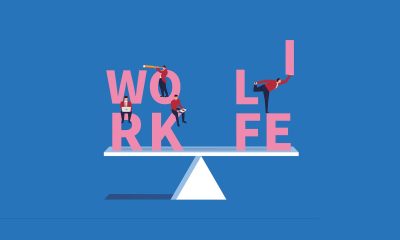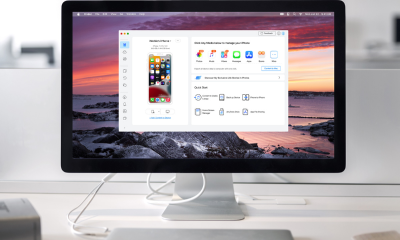Personal Finance
Mortgage rates inch toward new high and home prices rising too: Freddie Mac

Mortgage rates responded to mixed economic data by continuing a slow rise to the 7% mark, according to Freddie Mac.
The average 30-year fixed-rate mortgage increased to 6.9% for the week ending August 3, according to Freddie Mac’s latest Primary Mortgage Market Survey. That’s up from the previous week when it averaged 6.81%. A year ago, the 30-year fixed-rate mortgage averaged 4.99%.
The average rate for a 15-year mortgage was 6.25%, up from 6.11% last week and up from 4.26% last year.
Rates have continued to climb in recent weeks in response to a mixed bag of economic data. Last week, the Federal Reserve increased interest rates by 25 basis points, the 11th rate hike since last year. The central bank also reiterated its commitment to bring inflation to a 2% target rate. That could mean further interest rate increases before the end of the year, Fed Chairman Jerome Powell said.
However, a strong jobs market and resilient economic growth are pushing the recession timeline further away, according to a recent Fannie Mae economic forecast report.
Meanwhile, credit rating agency Fitch downgraded the U.S. to AA+ from AAA, citing fiscal deterioration over the next three years.
“The combination of upbeat economic data and the U.S. government credit rating downgrade caused mortgage rates to rise this week,” Freddie Mac Chief Economist Sam Khater said. “Despite higher rates and lower purchase demand, home prices have increased due to very low unsold inventory.”
If you want to take advantage of interest rates before they potentially go up, you could consider shopping for the right mortgage or refinance your existing one. Visit Credible to speak with a mortgage expert and get your questions answered.
MOST CONSUMERS AREN’T SOLD ON THE BENEFITS OF BUY NOW, PAY LATER: REPORT
Lack of homes is the biggest challenge right now
Mortgage rates have hovered between 6% to 7% since the start of the year. Although affordability continues to sideline some, many homebuyers have been adjusting their budgets to make current rates work with their plans, according to Keeping Current Matter Chief Economist George Ratiu.
The biggest challenge for these buyers is finding available inventory. Thirty-two percent of realtors said a lack of inventory, not mortgage rates, was the most important factor limiting potential clients from making a purchase, according to the National Association of Realtors (NAR) 2023 Member Profile.
While the lack of available housing inventory is the biggest issue for the housing market – homeowner vacancy fell to a historical low of 0.7% in the second quarter of 2023 – high mortgage rates have primarily caused that dynamic. Hight rates mean it would be costly for homeowners with a mortgage significantly below today’s rates to finance their next home purchase.
“Mortgage rates are expected to remain elevated for the next couple of months, keeping pressure on affordability,” Ratiu said. “For buyers who are not in a hurry, the fall and winter months could bring better values and a less competitive environment to find the right home.”
If you are ready to shop for a mortgage, you could get a better rate by looking at several lenders. Credible can help you compare interest rates from multiple mortgage lenders and choose the one with the best rate for you.
RISING COSTS OF OWNING A CAR PUSHING MORE AMERICANS TO CONSIDER GOING CARLESS, SURVEY SAYS
The housing market is missing 320,000 affordable homes
A U.S. housing market rebalance would also require more homes in the affordable price range for middle-income buyers, households earning up to $75,000 annually, to be added to supply inventory, according to a second NAR report.
NAR calculated that the housing market needs to include roughly 320,000 homes valued up to $256,000, the affordable price range for middle-income buyers.
In June, the median list price for a home available for sale was $445,000, according to data from Realtor.com. At the current listing price, middle-income buyers could afford less than 23% of homes on the market, NAR said. Five years ago, this income group could afford to buy half of all available homes.
“Middle-income buyers face the largest shortage of homes among all income groups, making it even harder for them to build wealth through homeownership,” NAR Senior Economist and Director of Real Estate Research Nadia Evangelou said. “A two-fold approach is needed to help with both low affordability and limited housing supply.
“It’s not just about increasing supply,” Evangelou continued. “We must boost the number of homes at the price range that most people can afford to buy.”
If you’re interested in becoming a homeowner, finding the best mortgage rates could help save you money. Visit Credible to compare options from different lenders without affecting your credit score.
HERE’S HOW TO SIGN UP FOR BIDEN’S NEW STUDENT LOAN REPAYMENT PLAN SAVE
Have a finance-related question, but don’t know who to ask? Email The Credible Money Expert at moneyexpert@credible.com and your question might be answered by Credible in our Money Expert column.
Read the full article here

-

 Side Hustles6 days ago
Side Hustles6 days agoHow to Create a Unique Value Proposition (With Tips & Examples)
-

 Side Hustles6 days ago
Side Hustles6 days agoThe DOJ Reportedly Wants Google to Sell Its Chrome Browser
-

 Investing5 days ago
Investing5 days agoAre You Missing These Hidden Warning Signs When Hiring?
-

 Make Money5 days ago
Make Money5 days ago7 Common Things You Should Never Buy New
-

 Investing7 days ago
Investing7 days agoThis Founder Turned a Hangover Cure into Millions
-

 Investing2 days ago
Investing2 days agoThis All-Access Pass to Learning Is Now $20 for Black Friday
-

 Side Hustles3 days ago
Side Hustles3 days agoApple Prepares a New AI-Powered Siri to Compete With ChatGPT
-

 Passive Income2 days ago
Passive Income2 days agoHow to Create a Routine That Balances Rest and Business Success


















